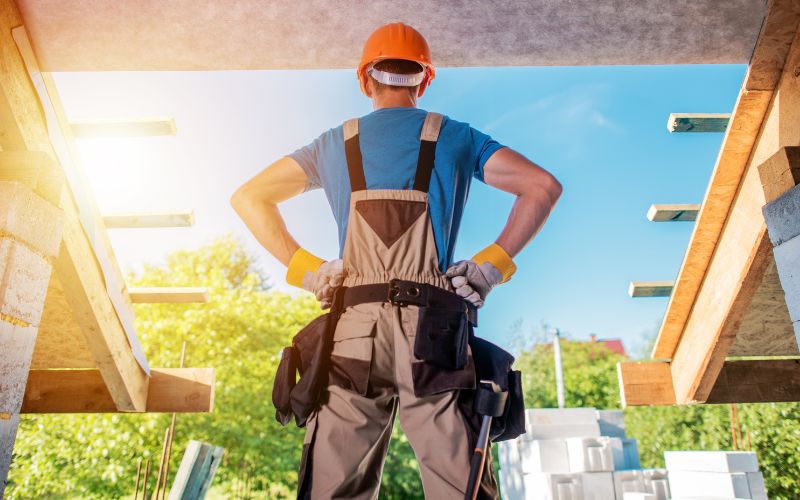
When it comes to investing in real estate, you face a crucial decision: should you build a property from the ground up or purchase an existing one? Each option has its own set of advantages and disadvantages, so it is essential to weigh the pros and cons carefully before making a choice.
Building an investment property
If you have a solid financial foundation, the patience to wait for returns, and a strong desire to turn your own ideas into reality, then building might be the right choice for you. Builder-investors often have experience in construction or have access to a trusted team to manage the project.
Advantages of building an investment property
Being a builder-investor has several benefits, including the ability to customise the property according to your exact specifications and the potential for bigger capital appreciation.
-
Customisation: Building a property from scratch allows you to build it based on specifications that perfectly align with the preferences and needs of the potential home seekers in your market.
-
Newer and more energy-efficient: Newly built homes often include modern amenities and energy-efficient features, which can attract tenants and buyers looking for the latest technology and lower utility bills.
-
Potential for greater appreciation: New properties may appreciate faster due to their modern design and lower maintenance requirements.
Disadvantages of building an investment property
While building your own investment property has its merits, you also need to take into consideration its potential downsides, including costs, longer time needed to profit, and its overall higher risks.
Higher initial costs: Construction involves significant upfront costs, such as land acquisition, permits, and building expenses, all of which can strain your finances.
Longer Time to Profit: Construction can take months or even years, delaying rental income and increasing carrying costs.
Higher Risk: Delays, cost overruns, or market fluctuations can increase the risk of not achieving the desired return on investment.
Buying an investment property
Buying an investment property is the right route for you if you seek more immediate income, have limited initial resources, and prefer lower risks. This choice is especially attractive when you want to tap into established neighbourhoods with reliable rental demand without managing a construction project.
Advantages of buying an investment property
Buying a property is a straightforward way to enter the property investment market.
-
Immediate income: Purchasing an existing property allows you to generate rental income almost immediately, providing a quicker return on investment.
-
Established neighbourhoods: Existing properties are often located in well-established neighbourhoods with proven rental demand.
-
Lower initial costs: The upfront costs of buying an existing property are generally lower than building one since you don't have to worry about land acquisition or construction.
Disadvantages of buying an investment property
There are also downsides to buying an already built investment property — for one, you might not be able to fully customise the property to your liking.
-
Limited customization: Pre-existing properties may not meet all your preferences, and renovations to upgrade the property can be costly and time-consuming.
-
Potential hidden issues: Established properties can come with maintenance and repair surprises that may not be immediately apparent during the purchase process.
-
Less energy efficiency: Established properties may lack modern energy-efficient features, potentially increasing operating expenses.
Costs Comparison: Building versus Buying
To provide a clearer picture, here is a comparison of the typical costs associated with building and buying an investment property. Keep in mind that these costs can vary significantly based on location, property size, and other factors.
|
Cost Category |
Building an Investment Property |
Buying an Investment Property |
|
Land Acquisition |
High |
Included in Property Price |
|
Construction |
High |
Not Applicable |
|
Permits and Fees |
High |
Moderate to Low |
|
Renovations/Upgrades |
Moderate to High |
Moderate to High |
|
Time to Income |
Months to Years |
Immediate to Months |
|
Customization |
High |
Limited |
|
Risk |
High |
Moderate |
Which is the right strategy for you?
The decision to build or buy an investment property will be influenced by your financial situation, risk tolerance, and investment goals. If you prioritise customisation and long-term potential, you may lean toward building, but keep in mind the higher costs and longer timeframes. On the other hand, if you value immediate income and lower initial costs, buying an existing property might be more appealing, even if it means compromising on customization.
Ultimately, the right choice depends on your individual circumstances and investment strategy. Consider consulting with real estate professionals and financial advisors to help you make an informed decision that aligns with your objectives and risk tolerance.
Whether you choose to build or buy, remember that real estate investment remains a promising avenue for wealth building and generating passive income when approached wisely.
Buying an investment property or looking to refinance? Compare investment home loan rates through the table below. We feature home loans with some of the lowest interest rates on the market for investors.
| Lender | Home Loan | Interest Rate | Comparison Rate* | Monthly Repayment | Repayment type | Rate Type | Offset | Redraw | Ongoing Fees | Upfront Fees | LVR | Lump Sum Repayment | Additional Repayments | Split Loan Option | Tags | Features | Link | Compare |
|---|---|---|---|---|---|---|---|---|---|---|---|---|---|---|---|---|---|---|
6.19% p.a. | 6.58% p.a. | $2,589 | Principal & Interest | Variable | $0 | $530 | 90% | Featured 90% LVR |
| |||||||||
6.04% p.a. | 7.60% p.a. | $2,408 | Principal & Interest | Fixed | $0 | $180 | 85% | |||||||||||
5.94% p.a. | 6.58% p.a. | $2,383 | Principal & Interest | Fixed | $10 | $150 | 80% | |||||||||||
6.29% p.a. | 6.42% p.a. | $2,473 | Principal & Interest | Variable | $10 | $690 | 90% |
-
Photo by welcomia on Canva.
Collections: Property Investment Investing

 Fact checked
Fact checked





Share